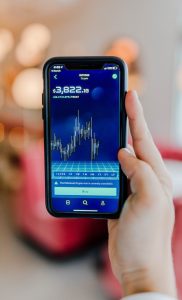Navigating the Complexities of Forex Direct Market Access Platforms
In the world of forex trading, having access to the right tools and platforms is crucial for success. One such tool that has gained popularity among traders is the Direct Market Access (DMA) platform. DMA platforms offer traders direct access to the interbank market, allowing them to trade with the liquidity providers themselves. However, navigating the complexities of DMA platforms can be challenging for both novice and experienced traders. In this article, we will explore the intricacies of DMA platforms and provide valuable insights for traders.
DMA platforms, also known as non-dealing desk platforms, eliminate the need for intermediaries such as brokers. Instead, traders directly interact with liquidity providers, which include banks, financial institutions, and other market participants. This offers several advantages, including lower trading costs, faster execution, and increased transparency. However, it also comes with its own set of complexities that traders need to understand.
One of the key complexities of DMA platforms is the pricing structure. Unlike traditional brokerages, DMA platforms offer variable spreads that are determined by the liquidity providers. This means that spreads can widen or tighten depending on market conditions. While this allows traders to access institutional-grade pricing, it also requires them to constantly monitor the market and adjust their strategies accordingly.
Another complexity is the order execution process. DMA platforms offer two types of order execution: market execution and limit execution. Market execution allows traders to enter the market at the current price, while limit execution allows them to set a specific price at which they want to enter the market. Understanding the advantages and disadvantages of each type of execution is crucial for making informed trading decisions.
Additionally, DMA platforms offer advanced order types that can further enhance trading strategies. These include stop-loss orders, take-profit orders, and trailing stops. Stop-loss orders help limit potential losses by automatically closing a position when a specified price level is reached. Take-profit orders, on the other hand, allow traders to secure profits by automatically closing a position when a specified price level is reached. Trailing stops are particularly useful in volatile markets as they automatically adjust the stop-loss level based on the price movement.
Risk management is another important aspect to consider when using DMA platforms. While the direct access to liquidity providers offers advantages, it also exposes traders to potential risks such as slippage and market manipulation. Slippage occurs when the execution price differs from the expected price, usually due to high market volatility or low liquidity. Market manipulation can occur when liquidity providers intentionally move the market to trigger stop-loss orders or manipulate prices to their advantage. Traders need to be aware of these risks and implement appropriate risk management strategies to protect their capital.
Furthermore, traders should also consider the technological requirements of DMA platforms. These platforms often require robust internet connections and powerful hardware to ensure smooth and uninterrupted trading. Traders should also be familiar with the platform’s user interface and functionality to navigate the platform effectively. Many DMA platforms also offer mobile trading applications, allowing traders to access the market on the go. It is essential to choose a platform that suits individual trading preferences and requirements.
In conclusion, DMA platforms offer traders direct access to the interbank market, providing advantages such as lower trading costs and faster execution. However, navigating the complexities of these platforms requires a thorough understanding of pricing structures, order execution processes, advanced order types, risk management, and technological requirements. Traders should take the time to educate themselves and gain hands-on experience with DMA platforms to effectively navigate the forex market and optimize their trading strategies.






